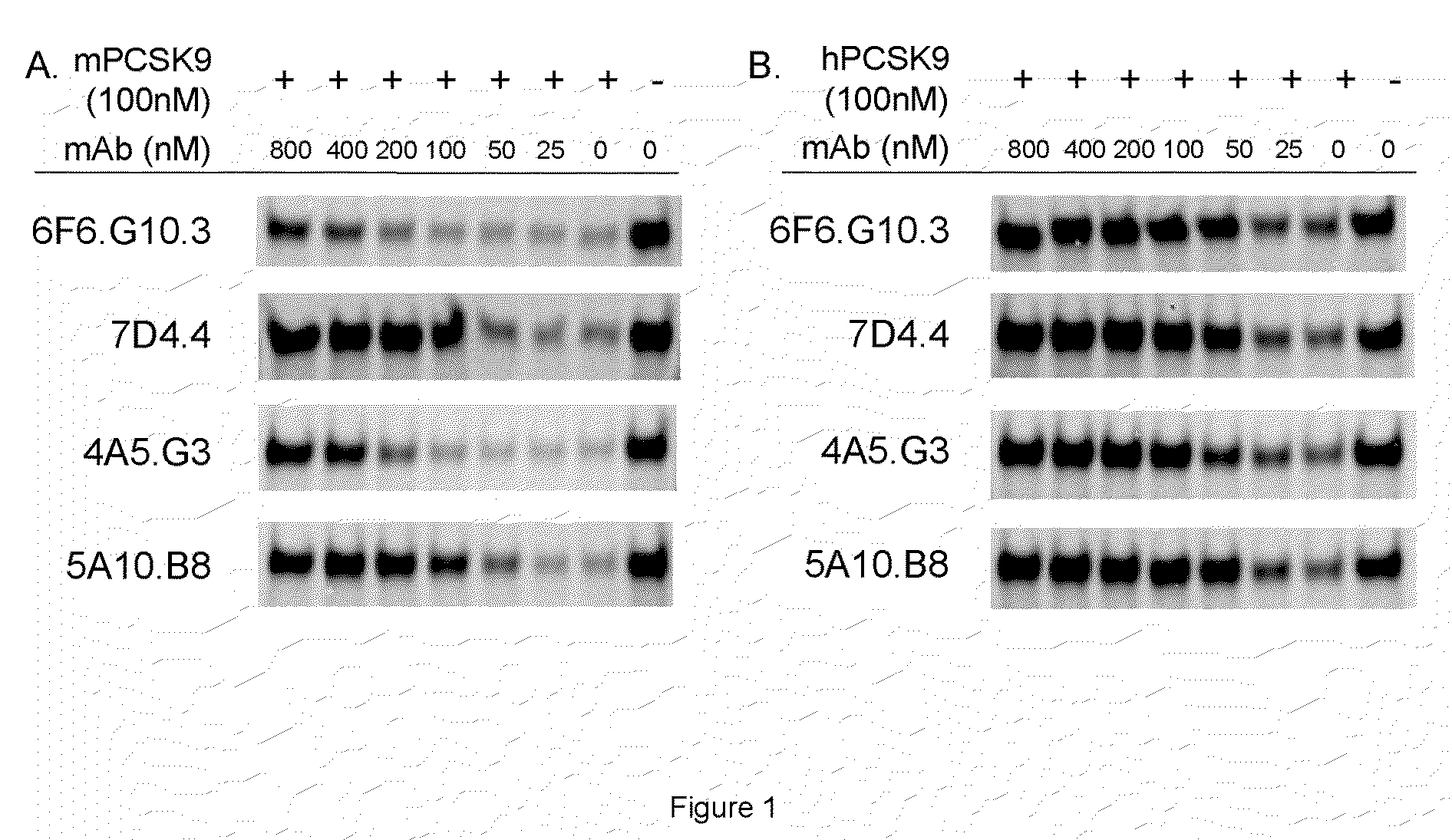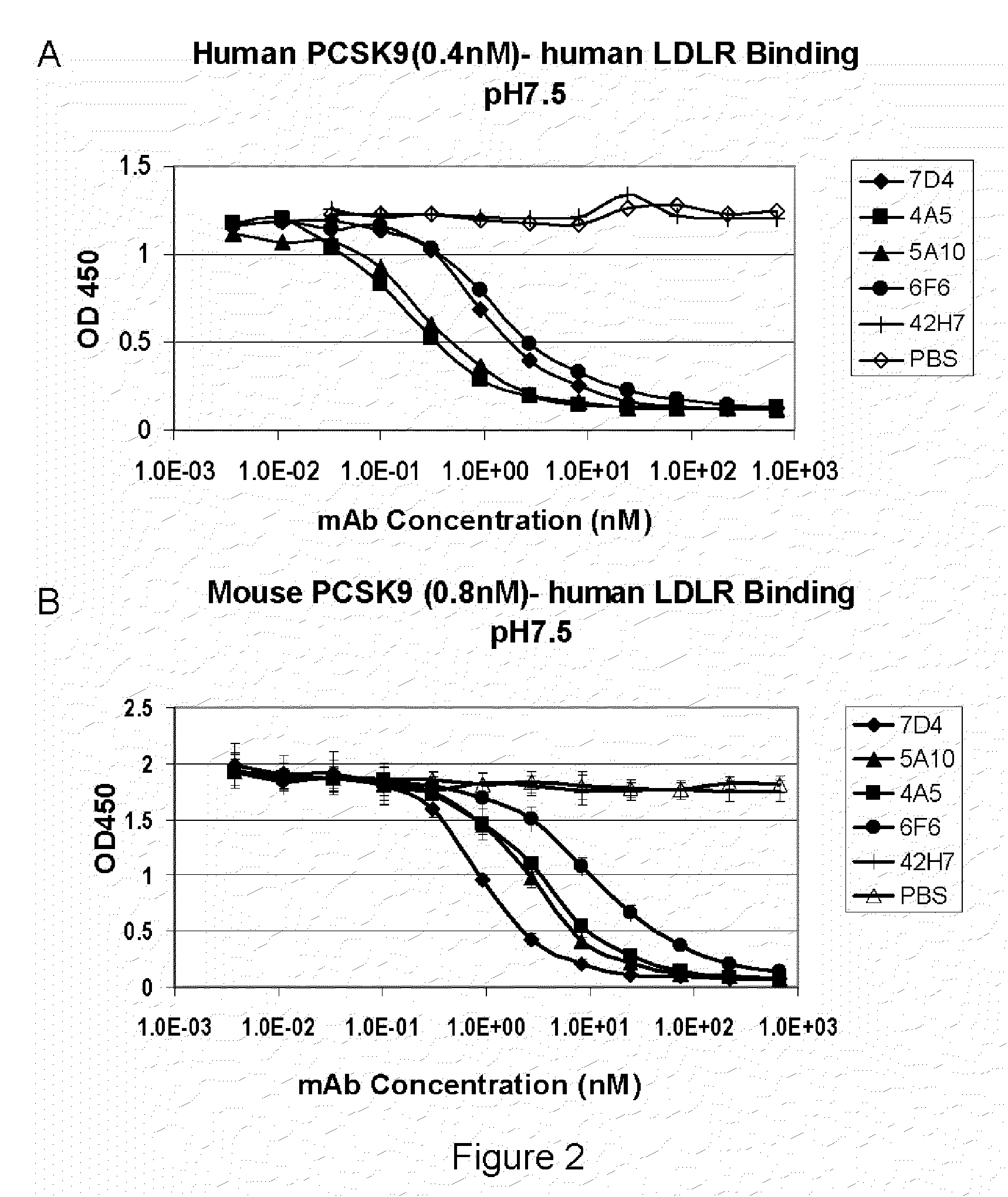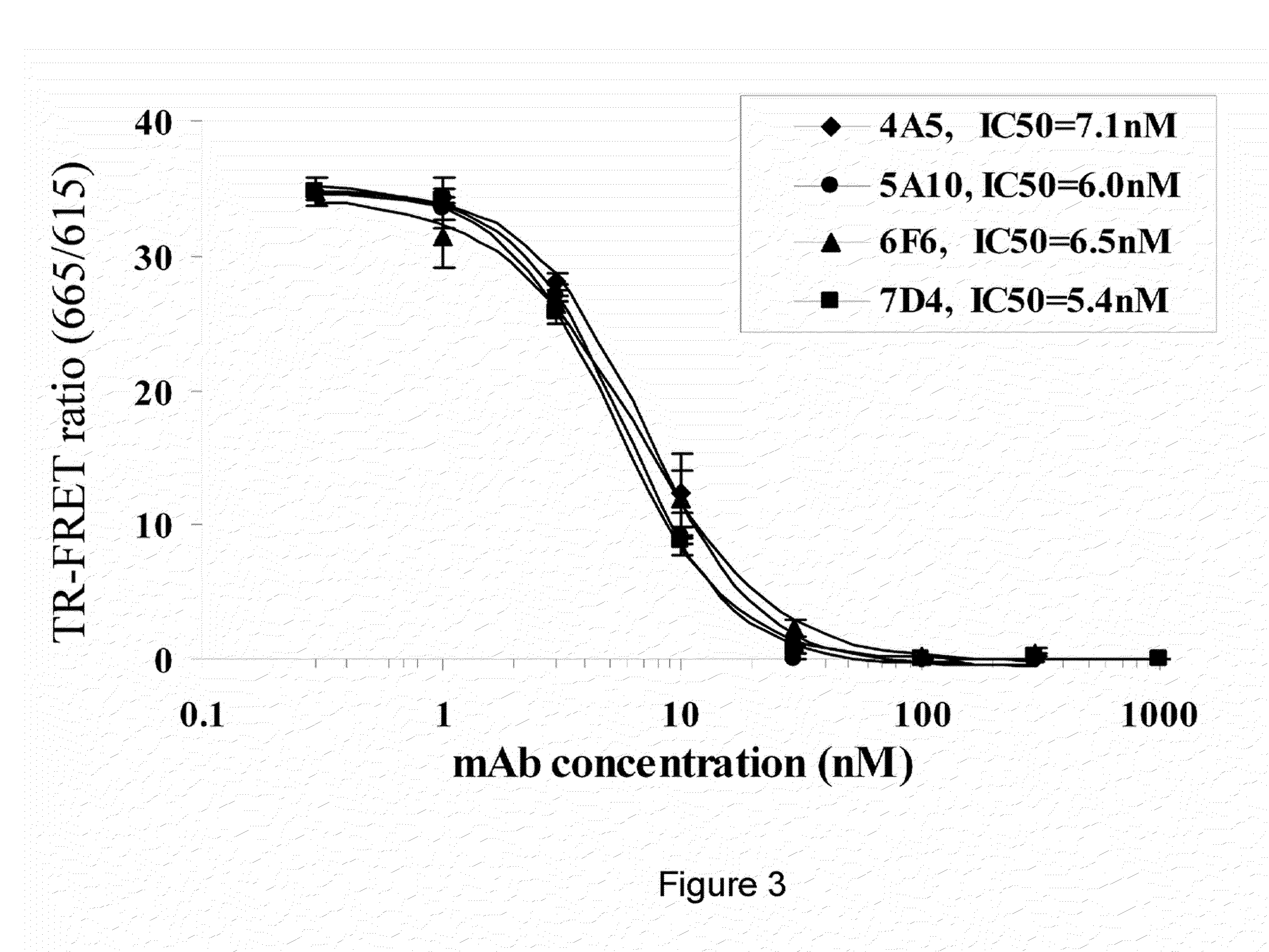Isolated antibody which specifically binds to PCSK9
a technology of pcsk9 and antibody, applied in the field of antibodies, to achieve the effect of lowering the ldl-cholesterol level
- Summary
- Abstract
- Description
- Claims
- Application Information
AI Technical Summary
Benefits of technology
Problems solved by technology
Method used
Image
Examples
example 1
Generating and Screening PCSK9 Antagonist Antibodies
General Procedures for Immunization of Animals for Generating Monoclonal Antibodies:
[0253]Balb / c or 129 / bl6 pcsk9− / − mice were injected 5 times on a 13 day schedule with 100 μg antigen. PCSK9− / − (that is, null or knock-out mice) can be obtained from, or as described by, Rashid et al., 2005, Proc Natl Acad Sci USA 102: 5374. See also U.S. Pat. No. 7,300,754. For the first 4 injections, antigen was prepared by mixing the recombinant proteins with adjuvant. Immunogen was given via injection to the scruff of the neck, the foot pads and intraperitoneally, approximately every 3 days over the course of 11 days, with the last boost administered i.v., without adjuvant. On Day 13, the mice were euthanized and their spleens were removed. Lymphocytes were immortalized by fusion with an established cell line to make hybridoma clones using standard hybridoma technology, distributed into 96 well plates. Clones were allowed to grow, then selected ...
example 2
Determining Antibody Binding Affinity
[0257]The affinities of PCSK9 antibodies to PCSK9 were measured on a surface plasmon resonance Biacore 3000 biosensor equipped with a research-grade sensor chip using HBS-EP running buffer (Biacore AB, Uppsala, Sweden—now GE Healthcare). Rabbit polyclonal anti-Ms IgGs were amine-coupled at saturating levels onto the chip using a standard N-hydroxysuccinimide / ethyldimethylaminopropyl carbodiimide (NHS / EDC) chemistry. The buffer was switched to HBS-EP+1 mg / mL BSA+1 mg / mL CM-dextran. Full-length PCSK9 IgGs were diluted to about 15 μg / mL and captured for 1 min at 5 μL / min to give levels of about 500RU per flow cell, leaving one blank to serve as a reference channel. 3.73-302 nM hPCSK9 or 2.54-206 nM mPCSK9 were injected as a 5-membered 3-fold series for 1 min at 100 μL / min.
[0258]Dissociation was monitored for 5 min. The chip was regenerated after the last injection of each titration with two 30 sec pulses of 100 mM phosphoric acid. Buffer cycles prov...
example 3
Analysis of the Effect of PCSK9 Antibodies on PCSK9-LDLR Interaction
[0260]PCSK9 has been shown to bind LDLR with an affinity of 180 nM under neutral pH (Cunningham et al., 2007, Nat Struct Mol Biol, 14(5):413-9). Recombinant mouse or human PCSK9 protein was biotinylated using the Pierce reagents following the manufacture's instructions. ELISA plates (Corning Mixisorb) were coated with a solution of 1 μg / ml recombinant LDLR extracellular domain (R&D Systems) in each well at 4 C overnight, blocked with 2% BSA+PBS for 2 hrs at room temperature, and then washed 5 times with washing buffer (1×PBS+0.05% Tween-20). Wells were incubated with 50 μl of indicated concentrations of biotinylated PCSK9 protein for 1 hr RT. LDLR-PCSK9 binding can be stabilized by adding 50 μl of 4% FDH+4% sucrose+PBS solution and incubate for 5 min. Wells were washed 5 times with washing buffer, incubated with 1:2000 dilution of HRP conjugated Strepavidin (Invitrogen) for 1 hr at RT, washed 5 times with washing bu...
PUM
| Property | Measurement | Unit |
|---|---|---|
| pH | aaaaa | aaaaa |
| pH | aaaaa | aaaaa |
| equilibrium dissociation constant | aaaaa | aaaaa |
Abstract
Description
Claims
Application Information
 Login to View More
Login to View More - R&D
- Intellectual Property
- Life Sciences
- Materials
- Tech Scout
- Unparalleled Data Quality
- Higher Quality Content
- 60% Fewer Hallucinations
Browse by: Latest US Patents, China's latest patents, Technical Efficacy Thesaurus, Application Domain, Technology Topic, Popular Technical Reports.
© 2025 PatSnap. All rights reserved.Legal|Privacy policy|Modern Slavery Act Transparency Statement|Sitemap|About US| Contact US: help@patsnap.com



